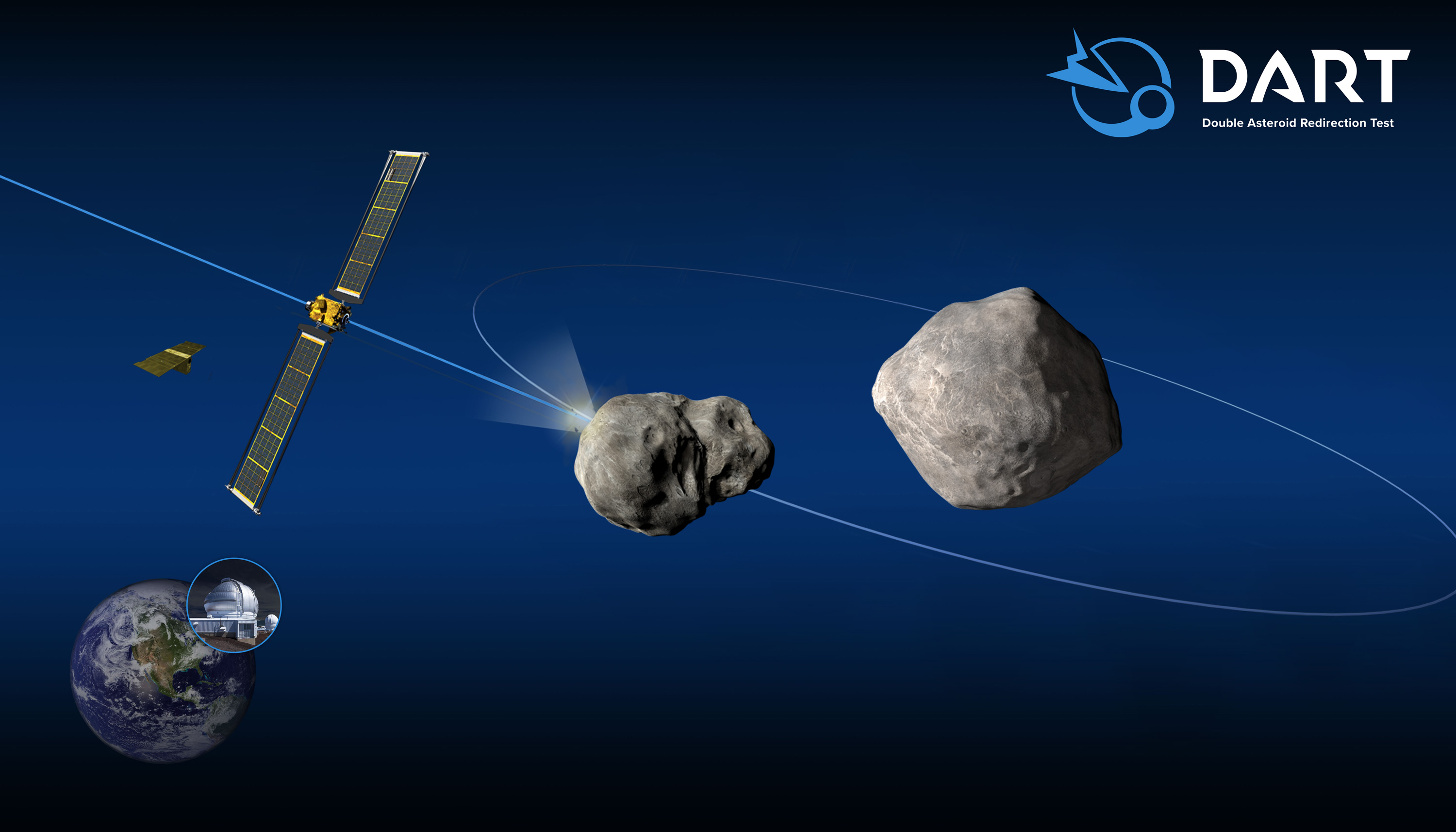The scientist are prepared to held a mission to crash a spacecraft into asteroid coming towards earth.
NASA: NASA is all set to prepare a mission to smash an spacecraft into an asteroid. This is a test to save humanity from a giant space rock hitting the lively earth.
Though, it sounds like fiction but it will be seen in the next coming days. This scientific research will be a hope to future. DART (Double Asteroid Redirection Test) is a real Proof-of-concept experiment, blasting off at 10:21pm Pacific Time Tuesday (11:51am IST Wednesday) aboard a SpaceX rocket from Vandenberg Space Force Base in California.
In a tweet by NASA says, "COMING UP: #DARTMission launch!
Our first test of #PlanetaryDefense is set to lift off at 1:21am ET (06:21 UTC) to attempt to change the motion of a non-threatening asteroid. Tune in at 12:30am ET (05:30 UTC) for live coverage: http://nasa.gov/live."
The main aim of the scientists is to slightly alter the trajectory of Dimorphos, a "moonlet" around 525 feet (160 metres, or two Statues of Liberty) wide that circles a much larger asteroid called Didymos (2,500 feet in diameter). The pair orbit the Sun together.
According to the researchers, the impact will fall in 2022, when the astroid will be closest to the planet earth almost 6.8 million miles (11 million kilometres).
NASA's top scientist Thomas Zuburchen said, "What we're trying to learn is how to deflect a threat."
He also added that the $330 million (roughly Rs. 2,460 crore) project, the first of its kind.
There are 10,000 known near-Earth asteroids 460 feet in size or greater, but none has a significant chance to hit in the next 100 years. One major caveat: scientists think there are still 15,000 more such objects waiting to be discovered.
NASA's Planetary Defense Coordination Office is most interested in those larger than 460 feet in size, which have the potential to level entire cities or regions with many times the energy of average nuclear bombs.
According to Tom Statler, DART program scientist said, "The CubeSat is going to give us, we hope, the shot, said Tom Statler, DART program scientist.
The most spectacular image of DART's impact and the ejecta plume coming off the asteroid. That will be a truly historic, spectacular image."





The Brief. Sign up to receive the top stories you need to know right now.